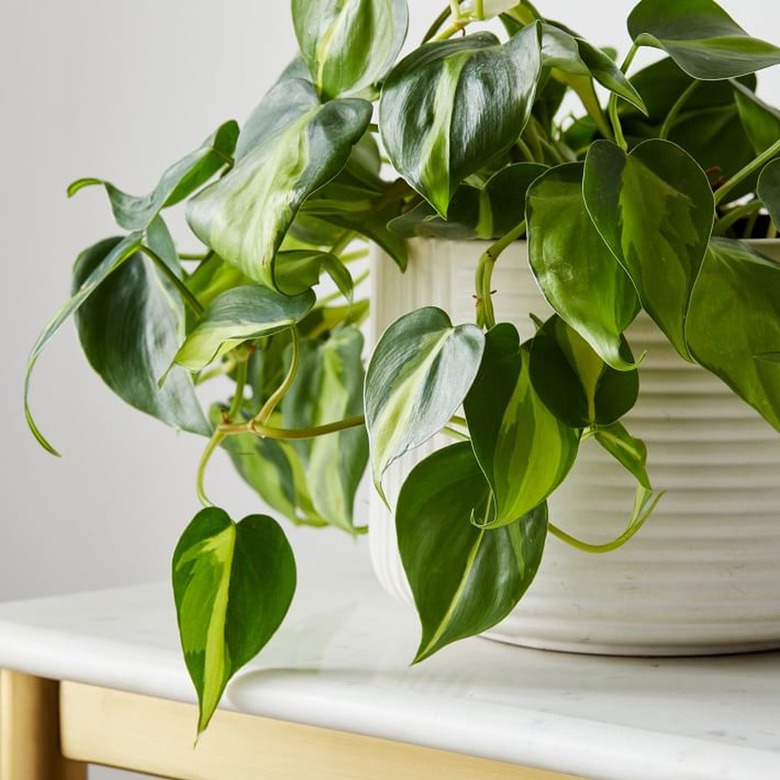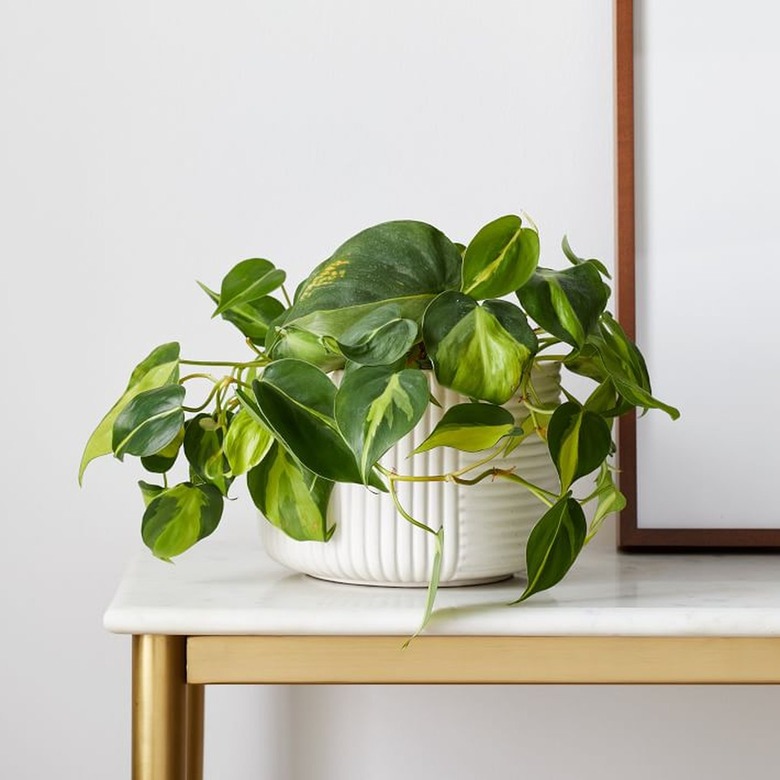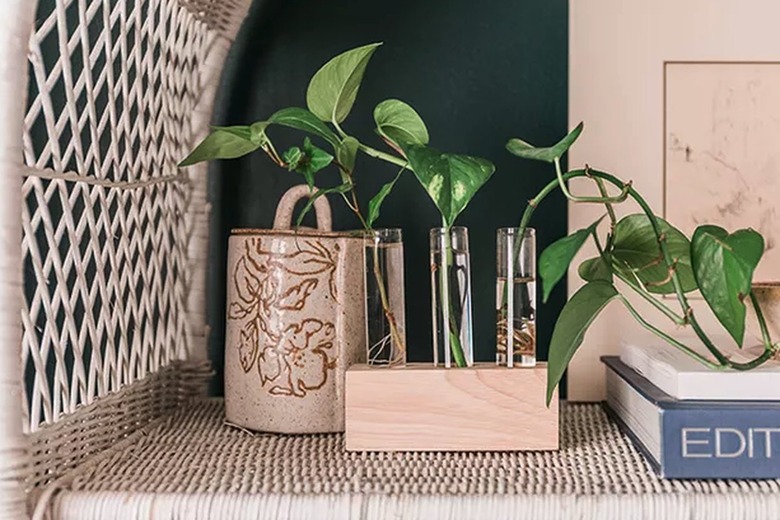If You're A Life Path Number 4, This Houseplant Is Ideal For You
We may receive a commission on purchases made from links.
You know your astrological sign, but are you up to speed on Numerology? It is an ancient study that draws meaning from different numbers, number combinations, letters, and symbols in your life. Your Life Path number — determined by your birth date — is the most influential numerology number, describing your character, including specific tendencies and traits that will impact and shape your life.
If you don't know your Life Path Number, click the link above ("How to Figure Out Your Life Path Number") or scroll to the bottom of this page to learn the quick equation.
About Life Path Number 4 Personalities
About Life Path Number 4 Personalities
Those on Life Path Number 4 have their feet planted squarely on the ground. They are the perfect employee or friend: stable, hardworking, and tenacious. No castles in the sky for LPN4; they are working too hard to build a rock-solid foundation to waste time with fantasies.
If you were born into this numbers vibration, you are as deep as the earth and rock solid, applying the wisdom of your ancestors in a rapidly changing world. You don't seek out challenges, but when challenges arise — as they always do — you are ready to overcome them. Your hard work makes you a dependable and trustworthy person in almost every situation possible.
If you are traveling life path number 4, you are a master of self-control and discipline. If dropped off in the wilderness alone, you are perfectly capable of surviving since it is in the LPN4 nature to need few frills and to maximize the resources at hand. So what houseplant could equal you for resilience? We've found the perfect one: Epipremnum aureum. (Common name: the golden pothos). Like the LPN4 personality, golden pothos needs little help to survive and does its job of creating energy from sunlight and air regardless of the situation in which it finds itself.
Epipremnum Aureum (Golden Pothos) and LPN4
Epipremnum Aureum (Golden Pothos) and LPN4
Life path 4s make the most of any situation, turning challenges to their benefit. They could survive anywhere, even on the proverbial desert island, thanks to their self-control and belief in themselves. What houseplant could possibly share these traits? The golden pothos, with its reputation for thriving on neglect and tolerating any light exposure. It's truly one of the easiest houseplants.
Though tough as nails, the golden pothos has all the allure of a big-leafed, tropical plant. It's a fast-growing, trailing vine, native to the South Pacific, and it is as resilient as any native scrub brush. Hard to believe as you admire its lush, heart-shaped leaves that are often splashed with contrasting shades of green or white or yellow. Indoors, the vine can grow to 30 feet, left to its own devices, but also does just fine cut back if you want to prune it.
Care for Epipremnum Aureum
Care for Epipremnum Aureum
The golden pothos is a marble queen that hails from the tropics, so it won't survive as an outdoor plant in any but the warmest U.S. Department of Agriculture hardiness zones. But indoors — that's a different story. It makes itself happy in almost any indoor situation, such as low light or indirect light, showing the same self-sufficiency that LPN4s are famous for. Ordinary potting soil is just fine and pothos shrugs off pH concerns, getting by in almost any growing situation.
We know you, LPN4, put work first, so that might mean you occasionally (or regularly) neglect your houseplants. But golden pothos is one of those indoor plants that can take it all in stride, even drought. They don't like wet soil anyway and do better when the soil dries out well between waterings. So forgetting to check for a few weeks is not a problem. Just try to avoid overwatering.
Buying an Epipremnum Aureum
Buying an Epipremnum Aureum
The LPN4 is not a person who will invest a lot of time in selecting a houseplant, so we won't send you to the garden store. You are likely too busy with your life tasks to enjoy the outing. The great thing about Epipremnum aureum is that any pothos plant you select will have the same characteristics — visual appeal and low maintenance — that we've described. So do it the easy way and order a plant online.
You are likely an Amazon prime member, since it's one efficient way to get things without spending a lot of precious time, so let's start there. Fortunately, Amazon offers a number of very tempting pothos specimens. We love the American Plant Exchange pothos in a 6-inch pot. It's already set up to climb a totem rather than just trail, and the vine is over 12 inches long, all for under $30. Or, same folks and same price: an 8-inch diameter pot with trailing pothos.
For just a bit more splash, you can get a beautiful variegated pothos a hanging basket from PothosNJoy, also on Amazon. It's bright green leaves are spiked with white for a stunning contrast and you can decide as you go whether you want it to climb or trail.
But Amazon isn't the only easy choice. Etsy offers a vast array of pothos as well. We are totally in love with FloridaPlantsGarden's 8-inch pothos offering for under $40. It's called "Pearls and Jade Pothos," and the leaves are special, lit up with spots of white, green, and grayish shades, with longitudinal white stripes on the green stems of plant. It is sure to give you a jolt of happiness every time you pass it. Also, West Elm has this beauty for $22 that would complement many of their gorgeous pots.
How to Figure Out Your Life Path Number
How to Figure Out Your Life Path Number
The formula to get your Life Path number is quite simple: you add together the numbers making up your birthday year, your birthday date, and your birth year. Each calculation should be done separately and reduced to a one-digit number or one of the master numbers, 11, 22, and 33. The master numbers are not reduced further until the end.
For example, someone born on 08/24/1986 would proceed as follows:
- 1) Calculate the month [add 0 + 8 = 8]
- 2) Calculate the date [2 + 4 = 6]
- 3) Calculate the year [1 + 9 + 8 + 6 = 24]
- 4) If the sum is a two digit number, continue to add digits together to get to a single digit [2 + 4 = 6]
- 5) Add the three single digits for month, day and year to get your Life Path Number; 8 + 6 + 6 = 20
- 6) If the sum is two digits, keep calculating until you get a single
digit: representing the Life Path Number: 2 + 0 = 2: Life Path Number 2
Note that 11, 22 and 33 are "master numbers." If any of your additions yields this number, do not break it down further by adding the two identical digits together. For example, with a birth date of 07/29/1974:
- 1) 0 + 7 = 7
- 2) 2 = 9 = 11 [do not break down further here]
- 3) 1 + 9 + 7 + 4 + = 21; 2 + 1 = 3
- 4) 7 + 11 + 3 = 21; 2 + 1 = 3: Life Path Number 3
For more information on other popular houseplants, check out these helpful articles:
For more information on other popular houseplants, check out these helpful articles:
- DIY Propagation Station (try this with any pothos cuttings)
- Best Plants for South-Facing Windows
- How to Know When You Have Enough Light for Your Plants
- Succulents as Indoor Plants: Care Tips
- Houseplant Care During the Winter
- Best Plants for Bathrooms (High Humidity Welcome!)
- Uncommon Houseplants Ideal for Low Light Rooms
- Indoor Plant Care Tips for Literally Everyone
- Pothos Plant Care Guide


